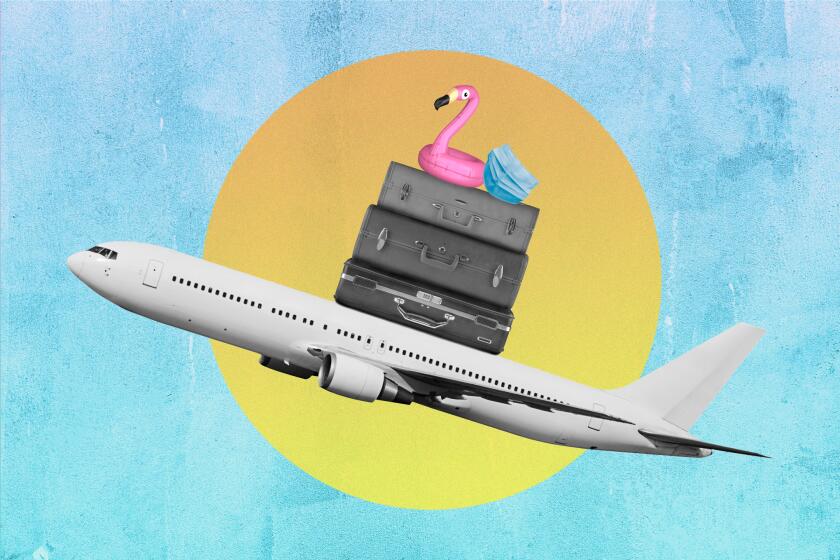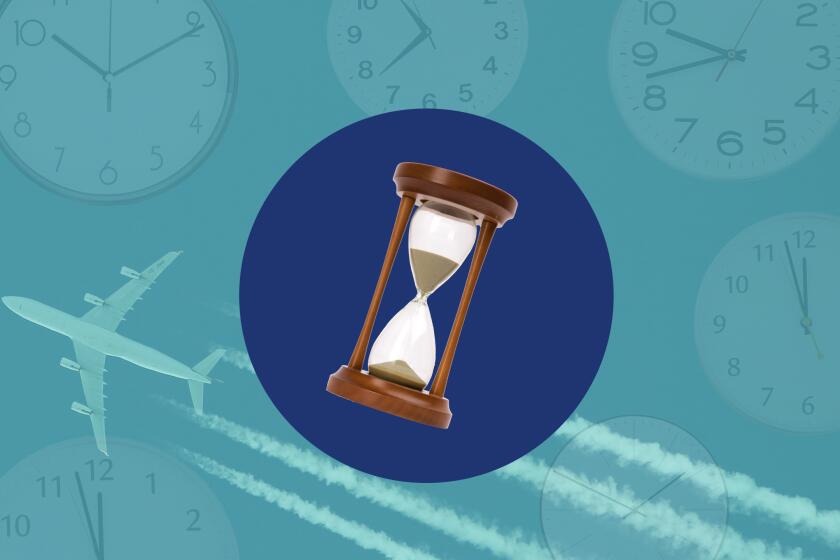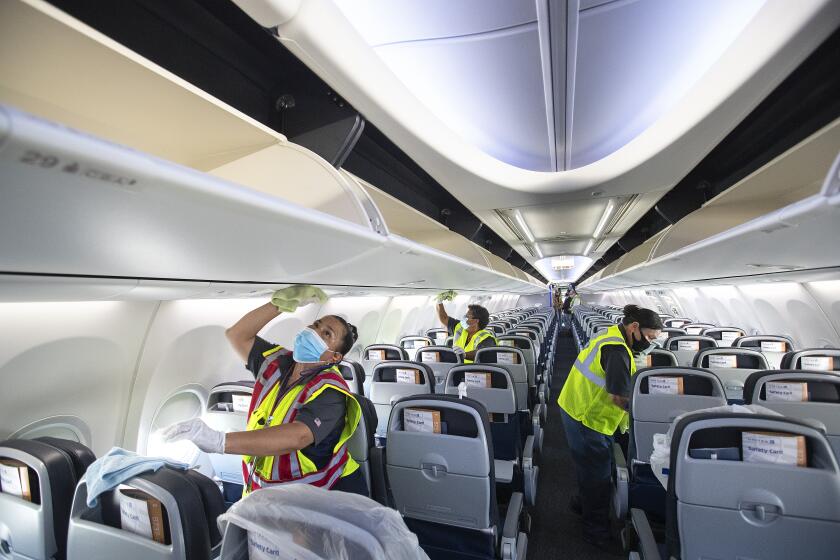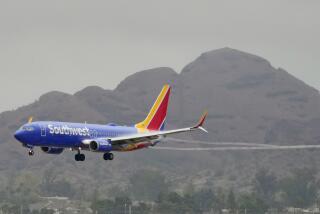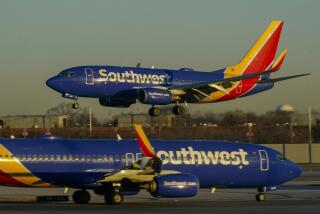Airline middle seats are a COVID risk, CDC research says, with caveats
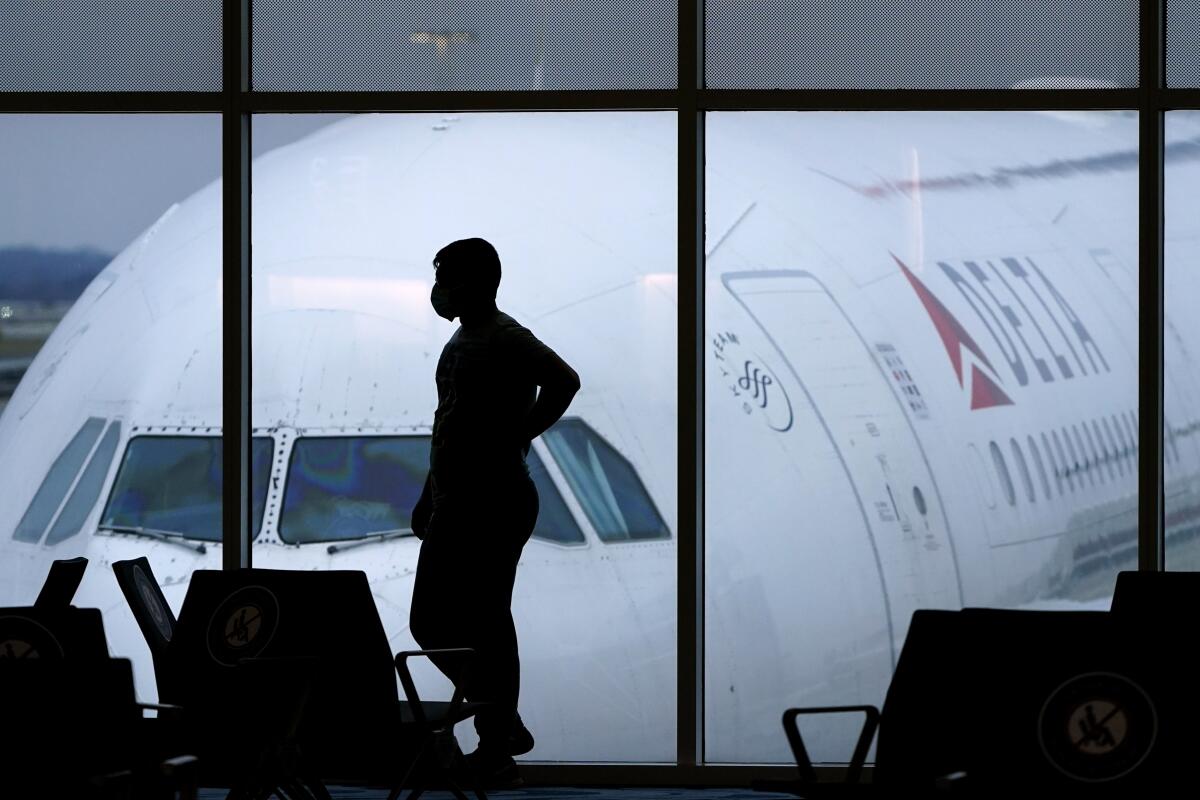
- Share via
The risk of being exposed to the coronavirus on an airline flight drops by as much as half when airlines keep middle seats open, a new study published by the U.S. government concludes, but it’s a safety practice the carriers have abandoned.
The study is the latest to roil the waters on a controversial topic: just how risky it is to travel during the COVID-19 pandemic. The study did not attempt to estimate infection risks, and it was based on modeling done before the pandemic, so it didn’t consider rules that now require face masks on flights.
The risk of coming in contact with the virus dropped by 23% to 57% if airlines limited passenger loads on both single-aisle and wide-body jets, compared with full occupancy, according to research released Wednesday by the Centers for Disease Control and Prevention.
“Based on a data-driven model, approaches to physical distancing, including keeping middle seats vacant, could reduce exposure to SARS-CoV-2 on aircraft,” the study said.
Travel by plane will be different this year, involving rules, regulations and requirements you might not have encountered before. Here is what to expect.
Although airlines have touted research — sometimes funded by the industry — showing low risks from the novel coronavirus during travel, there have been studies showing transmission can occur on flights even when passengers were wearing masks.
For the CDC study released Wednesday, scientists at the agency and Kansas State University, a leading center for study of airline cabin air quality, used multiple models to predict how airborne virus particles would spread on planes. The models were based on a surrogate virus and data from a 2017 study.
The study’s results may be too late for U.S. travelers.
Delta Air Lines Inc. will resume selling middle seats on May 1, the last U.S. carrier to lift a social-distancing policy that began more than a year ago. The carrier temporarily reopened the seats on some planes April 4 and 5 after a staffing shortage led it to cancel about 100 flights.
Delta decided to end the policy amid rising evidence of a long-expected resurgence in travel demand as U.S. vaccinations increase and consumers book flights to visit family or take a vacation.
The decision was based in part on “the knowledge that nearly 65% of those who flew Delta in 2019 anticipate having at least one dose of the COVID-19 vaccine by May 1,” Delta Chief Executive Ed Bastian said in announcing the decision March 31. The carrier earlier said it was “safe to sit in the middle seat” but opted to keep the ban in place to assuage any potential passenger anxiety.
Because flight attendants are potential COVID-19 super spreaders, it’s up to us to follow protection protocols, including remaining alone in my hotel room.
Some carriers never limited seating as a result of the pandemic. Others ended the practice months ago.
American Airlines Group Inc. is adding 150 new or restored routes this summer as it plans to fly more than 90% of its pre-pandemic domestic seat capacity.
Airlines for America, a trade group representing large U.S. carriers, said the industry has relied on aircraft filtration systems that remove viruses; disinfection and passengers attesting they are healthy and wearing masks.
“Multiple scientific studies confirm that the layers of protection significantly reduce risk, and research continues to demonstrate that the risk of transmission onboard aircraft is very low,” the group said in an emailed statement.
Airliners have filtration systems that remove viruses from the air, but other factors may increase contact with the contagion. “Aircraft can hold large numbers of persons in close proximity for long periods, which are conditions that can increase the risk for transmitting infectious diseases,” the CDC study said.
The CDC’s general guidance on travel continues to recommend that people delay travel until they are fully vaccinated because doing so “increases your chance of getting and spreading COVID-19.”
Although travel by air remains severely depressed since the pandemic erupted in March 2020, it has grown substantially this year.
On average, 1.4 million people a day have flown in the U.S. this month, about double the roughly 700,000 a day in early February, according to data from the Transportation Security Administration. By comparison, an average of about 2.3 million people a day flew in early April 2019.
The COVID-19 death of an airline passenger, and pilots’ and flight attendants’ complaints about other incidents, illustrate deficiencies in the systems meant to stop people from bringing the coronavirus on flights.
More to Read
Inside the business of entertainment
The Wide Shot brings you news, analysis and insights on everything from streaming wars to production — and what it all means for the future.
You may occasionally receive promotional content from the Los Angeles Times.
